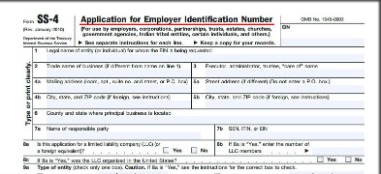Fixed Assets Defined: Benefits & Examples

Understanding the value of your current assets is critical for planning your business’s short-term future. Usually, fixed assets are owned to support the operations of the company. So, when an asset is owned to support a firm in its operations, it is a fixed asset. So, if a holding is only for selling purposes, it is considered a current asset. It is important to know the differences between fixed and current assets. Although current assets are handy in nature, fixed assets are considered more important for organizations.
First, we’ll break down fixed and current separately and explain their categories, then we’ll draw the differences between the two. In the meantime, start building your store with a free 3-day trial of Shopify. A financial professional will offer guidance based on the information provided and offer a no-obligation call to better understand your situation.
What are current assets?
Ask a question about your financial situation providing as much detail as possible. Our writing and editorial staff are a team of experts holding advanced financial designations and have written for most major financial media publications. Our work has been directly cited by organizations including Entrepreneur, Business Insider, Investopedia, Forbes, CNBC, and many others.
It allows you to manage non-current and current assets from a single solution so you can take charge of your assets and create a more efficient operation. Asset management makes the process of identifying and tracking the assets stolen by employees or customers easier. Although large, non-current assets such as vehicles and machinery are difficult to remove, tools and current assets like cash and inventory can be stolen. Asset management enables you to detect when items disappear and prevent loss in the first instance. Implementing asset management makes it easier for businesses to keep track of their current and non-current assets. These are investments that the business has made into other businesses to grow over time.
Examples of current assets
Current assets are assets that can be converted into cash within one fiscal year or one operating cycle. Current assets are used to facilitate gross profit vs operating income chron.com day-to-day operational expenses and investments. As a result, short-term assets are liquid, meaning they can be readily converted into cash.
- Our mission is to empower readers with the most factual and reliable financial information possible to help them make informed decisions for their individual needs.
- You‘ll spend too much money on manufacturing and storing the merchandise.
- You can all too easily record lost, damaged, or stolen assets in your business’s books.
- Of the ratios used by investors to assess the liquidity of a company, the following metrics are the most prevalent.
Insurance premiums are often paid before the period covered by the payment. Now that we better understand the different types of current assets available, here are a few examples of current assets and how they can be used to fund your business. It simplifies the process of optimizing your asset operations to help you increase uptime, extend the life of your equipment, and make your business’s assets more efficient and valuable.
Remember that this is a very generalised article and many factors will differ from business to business and industry to industry. The structure for current assets on the balance sheet is a little more universal than fixed assets, but will still change somewhat from industry to industry. This is by no means a complete list, you may have more or less than the ones listed below. If you’re new to the balance sheet, understanding each of its components can seem like an overwhelming and complicated ordeal, here we will go over the basics of fixed assets vs current assets. Fixed assets are defined as essential to company operations and services in order to generate revenue, so an asset cannot be acquired with the intention of investment or to be sold on.
Buildings and factories:
Generally, the higher the fixed asset turnover ratio, the more efficient the company is since it implies more revenue is created per dollar of fixed assets owned. Investors can gain a number of insights into a company’s financial strength and future prospects by analyzing its near-term, liquid assets. One important rule to note when accounting for long-term assets is that they appear on the balance sheet at their market value on the date of purchase.
Non-current assets are longer-term assets with a full value that you cannot recognize until after one year, such as property and machinery. When the asset is kept by the company for more than one financial year, we speak of fixed assets or non-current assets. They provide long-term benefits and help generate revenue for your company in the future.
Current Assets Explained
There’s no definitive way, but here are a few examples which you will likely see. A fixed asset is a long-term asset or an asset held by the company for a period longer than that of an accounting period such as property, plant, …. Concretely, from its creation, a company incurs purchases in order to acquire the goods which constitute its heritage. When a fixed asset is no longer usable by a company (say, a car that is no longer sufficient for business needs), it can be sold on. In some cases, this value is so low that a company doesn’t seek a sale at all.
What Are Capital Assets? – Bankrate.com
What Are Capital Assets?.
Posted: Wed, 16 Aug 2023 07:00:00 GMT [source]
The short-term debt of an organization may be settled with cash and equivalents (that may be converted). The predicted payments from clients that will be collected within a year make up accounts receivable. Because it contains raw materials and finished commodities that can be sold rapidly, inventory is also a current asset.
Inventory and PP&E are both considered tangible assets, meaning that they can be physically “touched”. Get instant access to video lessons taught by experienced investment bankers. Learn financial statement modeling, DCF, M&A, LBO, Comps and Excel shortcuts.
Non-current assets, also known as fixed assets, are assets that your business holds for longer than 12 months and uses as a source of long-term revenue generation. They usually have a high value, benefit the business for long periods, and cannot quickly be turned into cash. Current assets, such as cash and inventory, are things that are not meant to last in the business; they are more “liquid” and can be readily converted into cash.
However, property, plant, and equipment costs are generally reported on financial statements as a net of accumulated depreciation. The term “liquidity” refers to a company’s ability to meet its short-term financial obligations. The main difference between non-current and current assets is longevity. The current ratio is a liquidity ratio which defines a businesses ability to pay short-term debts within a year. This is simply the money that’s sitting in your bank account/savings account, tills in your shop, your wallet, or any spare change in your pocket!. It’s readily available cash that the business has immediate access to (the most liquid of liquid assets).
Fixed assets vs. current assets
Irrespective of where the inventory is placed include–raw materials, works in progress, or finished good–inventory is also considered a current asset. The company usually expects to sell inventory within a year’s time and hence they are considered current assets. Current assets are the assets that can be converted to liquid assets or cash within one accounting period.
